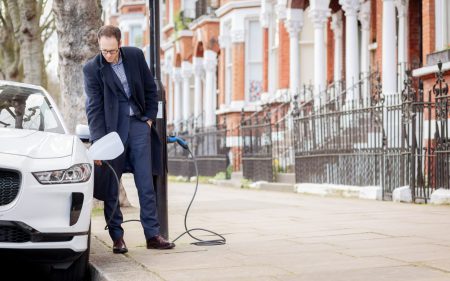With any transformation of an industry – and in particular an industry that relies so heavily on consumer habits and preferences – there are a myriad of questions to be answered and hurdles to be solved. Anyone familiar the decarbonisation of transport could probably give you a list as long as your arm: the availability of chargepoints, the impact of increased use of electricity on the grid, electricity vs hydrogen, the high upfront cost of electric vehicles (EVs) etc.
Although these require long-term planning that must start now, most will not become problems unless mass uptake of EVs is achieved. However, this can’t happen without a clear, concise plan to support everyone – and not just your typical early adopter – in making the switch. Without a plan, the high upfront costs and lack of driveways for private home chargers in many communities run a real risk of remaining too prohibitive.
Early adopters of new technologies are typically not your average user, and often reflect not only those who are clued up but also those who can afford to shell out on a new bit of new kit. Seen time and time again across many different sectors, the example perhaps most well known by those in the energy circles is domestic rooftop solar PV, which in the heady days of the early feed-in tariff was predominantly adopted in more affluent areas with a high proportion of detached housing, according to statistics released by what was then the Department of Energy and Climate Change in 2012.
Indeed, this is also a trend that EVs are seemingly following. A 2015 report for the Department for Transport found that most private EV owners at the time were middle-aged, male, well-educated, affluent and lived in areas with households containing two or more cars, and with the ability to charge at home.

Of course, this was six years ago and there has therefore, been plenty of time for the demographics to change. However a 2019 report carried out by Frontier Economics on behalf of the Environmental Defense Fund found that wealthy people were still buying EVs at higher rates than those on lower incomes, and that half of all ultra-low emission vehicles were owned by households in the richest two income deciles, compared to only a quarter for internal combustion engines (ICE). Meanwhile, households in the lowest two income deciles made up just 4% of ULEV owners, but over 10% of ICE vehicle owners.
There are a number of reasons behind this, with the upfront cost of an EV – which is higher than an ICE equivalent despite lower lifetime costs – a key factor, although it will likely change as prices continue to fall.
A second factor is that many lower income households, particularly in urban areas, do not have access to off street parking via driveways, meaning they are unable to install a private chargepoint. This either results in them having to rely on more expensive public rapid charging, or being left out of the transition completely.
In fact, the 2019-2020 English Housing Survey by the Ministry of Housing, Communities and Local Government found that in the social housing sector, just 1% of dwellings were classed as detached houses – and therefore more likely to have a driveway – while 36% were purpose built high-rise flats, a significant increase on the 11% in the private sector.
On-street charging and moving away from the early adopter
So how do you solve this, and place the entire breadth of society at the heart of this transition? It would be easy for the EV charging sector to put this problem on the backburner and target the low hanging fruit of the typical early adopter, but just a quick glance at the work of some of the well-known names – and indeed lesser known – in the sector proves otherwise.
Enter on-street charging. Enter companies like ubitricity, Connected Kerb, Source London, Trojan Energy, Char.gy and many more. Enter a different way of thinking of EV charging.
Read more: CURRENT
It’s Time to Go Green!
If you would like to know more about Solar Panels and the PowerBanx range of home battery systems, and get a free instant quote, please complete our online form:

